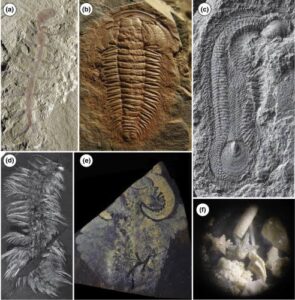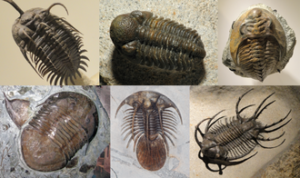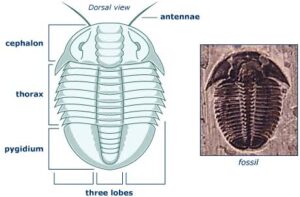Back to: ZOOLOGY 200 Level
WELCOME TO CLASS
Today, we’ll explore some fascinating, often overlooked groups of animals—Onychophora, Pentastomida, and Trilobites (the latter of which are now extinct). These creatures might not be as well-known as others, but they offer incredible insights into the diversity of life and evolutionary history. Let’s take a closer look at each of these groups and uncover what makes them special.
Onychophora, Pentastomida, Trilobites (Extinct)
Onychophora: The Velvet Worms
Onychophora, commonly known as velvet worms, are unique creatures that are often described as living fossils. They are found in moist, tropical environments and have a striking appearance with soft, segmented bodies covered in fine hairs, giving them a velvety texture.

One of the most interesting aspects of velvet worms is their predatory behaviour. They hunt by using specialised structures on their heads, which they use to spray a sticky, glue-like substance onto their prey, immobilising them. This remarkable strategy helps the velvet worm to capture prey that is larger or faster than it might otherwise be able to catch.
In terms of structure, velvet worms have segmented bodies, much like arthropods, and they exhibit some features that link them to the ancient ancestors of arthropods. Though they’re not technically arthropods, their evolutionary relationship to them has made them a key focus of studies on the transition between invertebrate groups.
Pentastomida: The Tongue Worms
Pentastomida, also known as tongue worms, are parasitic arthropod relatives with a distinctive appearance. They are often found in the respiratory tracts of vertebrates, including reptiles, birds, and sometimes mammals. Despite their name, tongue worms are not actually worms—they are more closely related to arthropods, particularly arachnids.

Pentastomids have a unique, worm-like body structure, but their most striking feature is their mouth, which is equipped with hooks and a pair of claw-like structures that allow them to anchor themselves firmly in the host’s respiratory system. They feed on the host’s tissues, and in some cases, they can cause disease or respiratory issues.
Though they are parasitic, pentastomids do not usually cause serious harm to their hosts unless their population becomes too large. Their life cycle involves both an intermediate host (usually a small invertebrate) and a definitive host (typically a vertebrate). They are fascinating examples of parasitism in the animal kingdom, showcasing the variety of survival strategies evolved by different organisms.
Trilobites: The Extinct Marine Arthropods
Trilobites were one of the most successful groups of early arthropods, existing from the Cambrian period to the end of the Permian period, about 250 million years ago. These ancient creatures are best known for their distinctive three-lobed body structure, which gave them their name “trilobite.”
Trilobites were marine animals, and their fossils have been found in sediments all around the world. Their bodies were divided into three parts: the head, thorax, and tail. They had a hard exoskeleton that provided protection from predators and environmental factors. Most trilobites were scavengers or detritivores, feeding on small organic particles found on the seafloor.

While trilobites are extinct today, their fossils remain valuable in the study of ancient ecosystems and the evolution of arthropods. Their wide range of adaptations, including diverse feeding strategies and body forms, made them one of the most successful and diverse groups of animals in the Cambrian seas.
Summary
- Onychophora (velvet worms) are ancient, soft-bodied creatures that capture prey using sticky secretions from their heads.
- Pentastomida (tongue worms) are parasitic arthropod relatives that live in the respiratory systems of vertebrates.
- Trilobites were extinct marine arthropods known for their distinctive three-lobed body structure, and they thrived during the Cambrian period.
- These groups, while diverse in form and behaviour, provide important insights into evolutionary history and the variety of life forms that once existed on Earth.
Evaluation
- Describe the predatory behaviour of velvet worms.
- What is the feeding mechanism of pentastomids, and where do they live?
- Why are trilobites important to the study of ancient ecosystems?
- How do the structures of velvet worms and trilobites reflect their environments?
You’ve just explored some of the more unusual and fascinating creatures from the animal kingdom. Understanding ancient and modern invertebrates gives us a deeper appreciation for the variety of life forms that have shaped our planet. Keep going—there’s so much more to learn!
